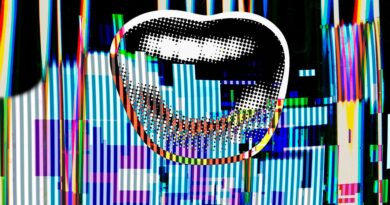NASA rover captures an aurora from Mars surface for the first time
NASA‘s Perseverance rover has captured an aurora in the night sky for the first time from the Martian ground.
Scientists have known for two decades that Mars‘ skies have auroras, too, but these curtains of undulating light had only been detected in ultraviolet — light that is invisible to the naked eye — until now. All previous Martian auroras were observed from orbiters in space.
The result is a grainy portrait, shown farther down in this story, reminiscent of the snow one might remember seeing on an old television when it lost a signal. But it represents a monumental achievement, said Elise Wright Knutsen, first author of the research from the University of Oslo in Norway. A paper on the unprecedented observation was published in the journal Science Advances on May 14.
“The photo was taken with an instrument not necessarily optimized for nighttime imagery, and so it isn’t like the spectacular aurora images we have from Earth,” Knutsen told Mashable. “But hopefully people will appreciate the softly glowing green sky, regardless of the image being rather pixelated.”

The actual images taken by Perseverance, whose instruments are not optimized for nighttime viewing, were not as glamorous as this artist’s depiction, but the detection was a monumental achievement, researchers said.
Credit: Alex McDougal-Page illustration
When the sun releases radiation during a solar storm, charged particles travel along a planet’s invisible magnetic field lines. When these particles strike gases in the atmosphere, they heat up and glow. The side effects are colorful light displays known as auroras.
On Earth, the colors differ depending on the type of atmospheric gas and its altitude. Oxygen glows red or blue, while nitrogen can create green, blue, or pink. The recent strong solar storm conditions — a by-product of the sun being at solar maximum — are causing auroras around the North Pole, known as the Northern Lights, to sprawl, allowing people who live farther south to see them.
Mars’ magnetic field is different from Earth’s, and so the auroras are quite exotic. They aren’t tethered to the polar regions of the planet. Instead, the Red Planet’s auroras can be found in a hodgepodge of places and come in at least four varieties: localized discreet auroras, global diffuse auroras, proton auroras on the side facing the sun, and a large wormlike aurora stretching to the nightside of the planet. Some of the auroras sprout from the ground, thought to form around what’s left of the ancient magnetic field in the planet’s crust.
Mashable Light Speed
Perseverance, which is exploring Jezero crater, where a river once emptied into a delta, spotted the aurora on March 18, 2024. The sun had blasted a torrent of energy expected to reach Mars, said UC Berkeley’s Rob Lillis, who isn’t an author on the new paper, in a 2024 Mashable interview.

NASA’s Perseverance rover took the first image of an aurora, left, from the surface of Mars on March 18, 2024. The image, right, is the sky without an aurora for comparison.
Credit: Knutsen et al. / Sci. Adv. 11 / eads1563 (2025)
But no one was sure of what exactly the rover would see, given there were so many variables, including timing and weather: Getting one of these night sky displays would be like catching lightning in a bottle.
“We actually told the rover team to point their camera upwards and see if they could see an aurora,” he said, “and they got the word just barely in time to send the command to go and look up.”
Perseverance used a special camera, called Mastcam-Z, and a laser tool, known as SuperCam, to observe the faint green haze. Though the glow was dim, the detection suggests that, under better viewing conditions, astronauts could one day see such a light display with their own eyes.
In fact, that’s one crucial reason why scientists bother studying these extraterrestrial auroras. In order for astronauts to land on Mars and explore one day, they’ll need navigation and communication systems that pass signals through the planet’s upper atmosphere. The more accurate scientists’ models are of Mars’ ionosphere, the layer of charged particles surrounding the planet, the better those technologies will work.

Twin orbiters built for the Escapade mission will attempt to take the first global images of Martian auroras in visible light.
Credit: Rocket Lab
Scientists are planning more ways to capture Martian auroras. A NASA-funded robotic mission, called Escapade, will seek to get to the bottom of how solar radiation strips away the tattered Martian atmosphere. The mission will involve two orbiters built by Rocket Lab, said Lillis, the principal investigator. Though the United Arab Emirates’ orbiter Hope has already obtained global images in ultraviolet light, with any luck, the Escapade probes will take the first global snapshots of Martian auroras in visible light.
After several previous failed attempts, the rover’s detection last year was a boon, said Knutsen, who personally longs to explore space. She even applied to the European Space Agency’s astronaut program a few years ago.
“I would give my left foot to have been there to see it myself,” she said, “but I hope one day I can retire under a softly glowing green Martian sky.”




